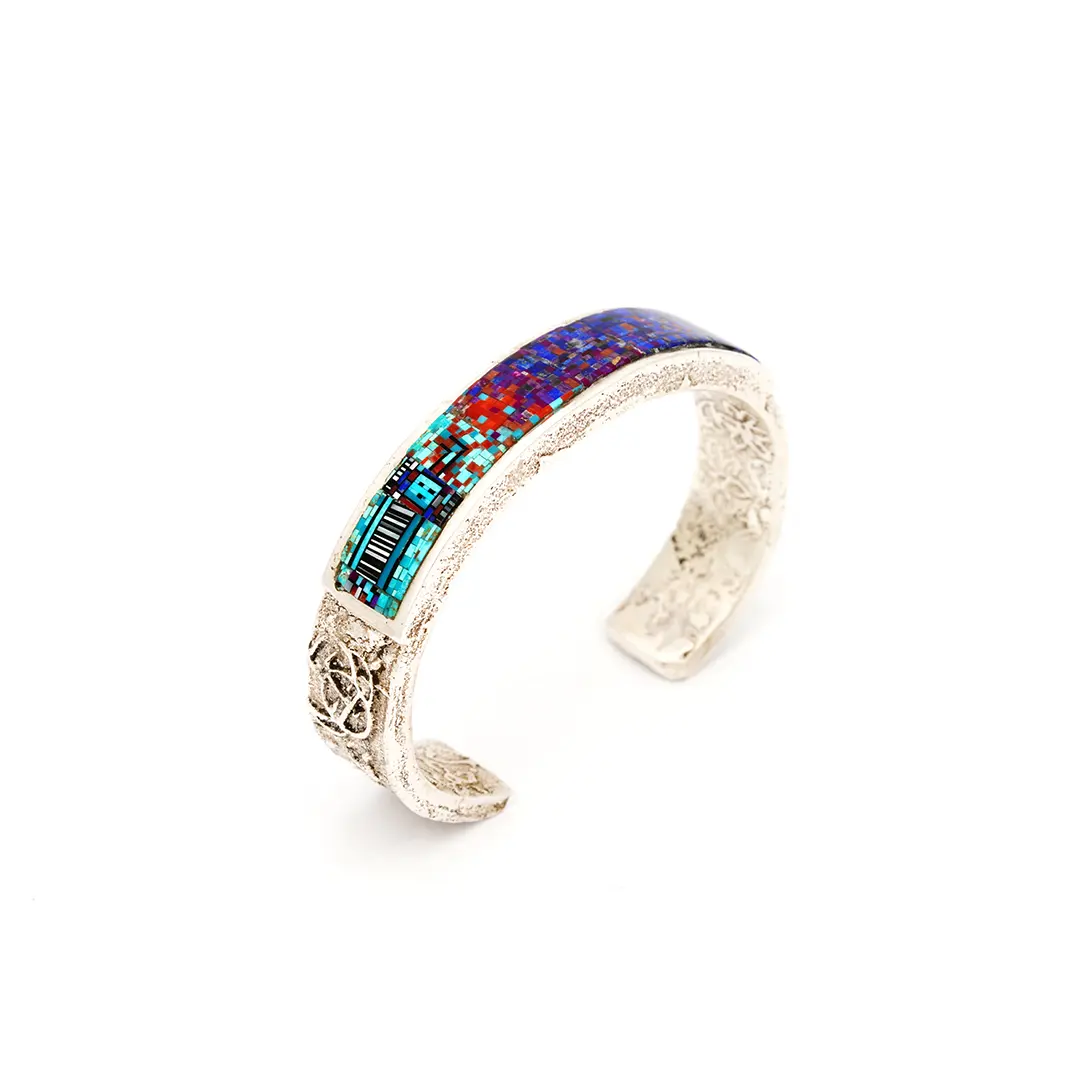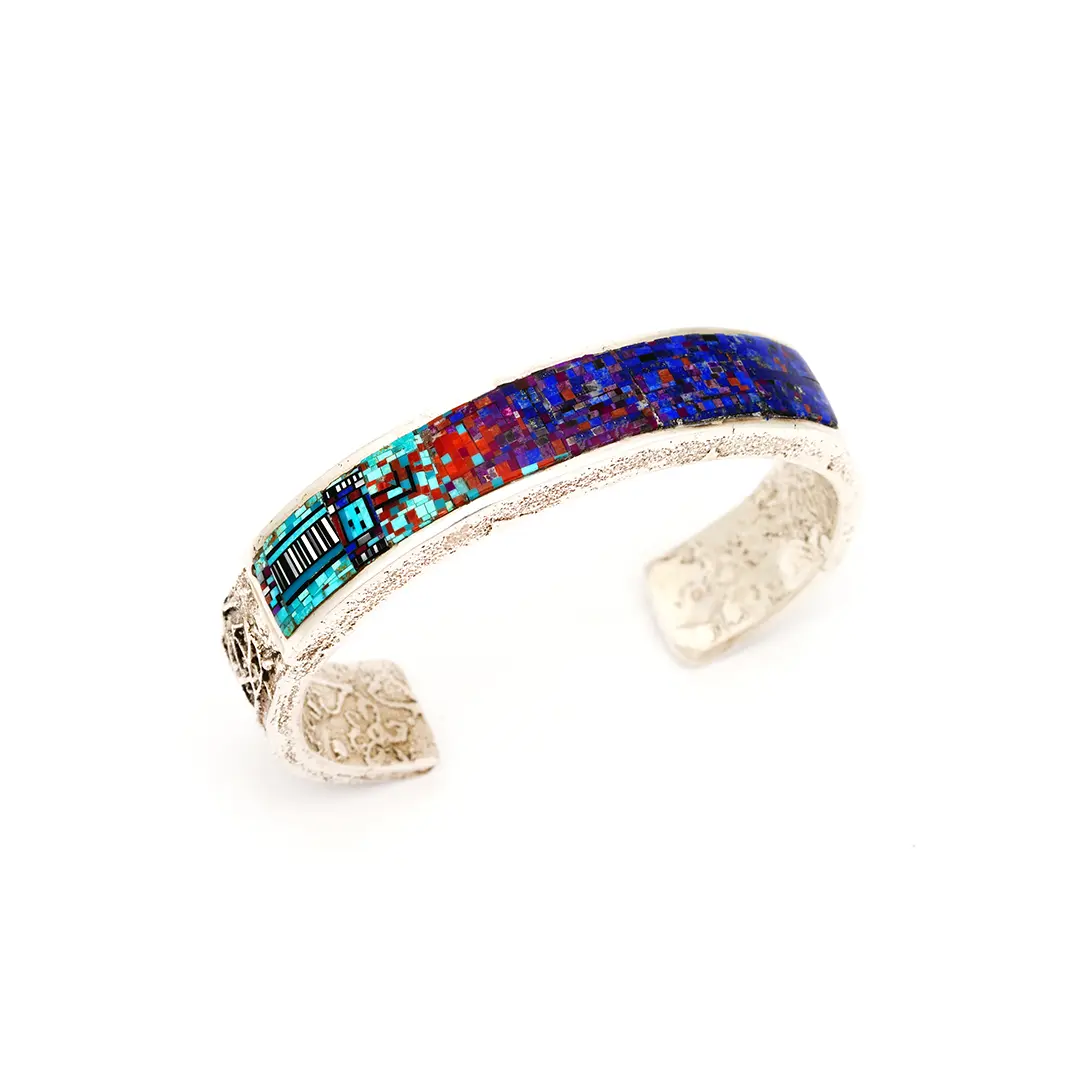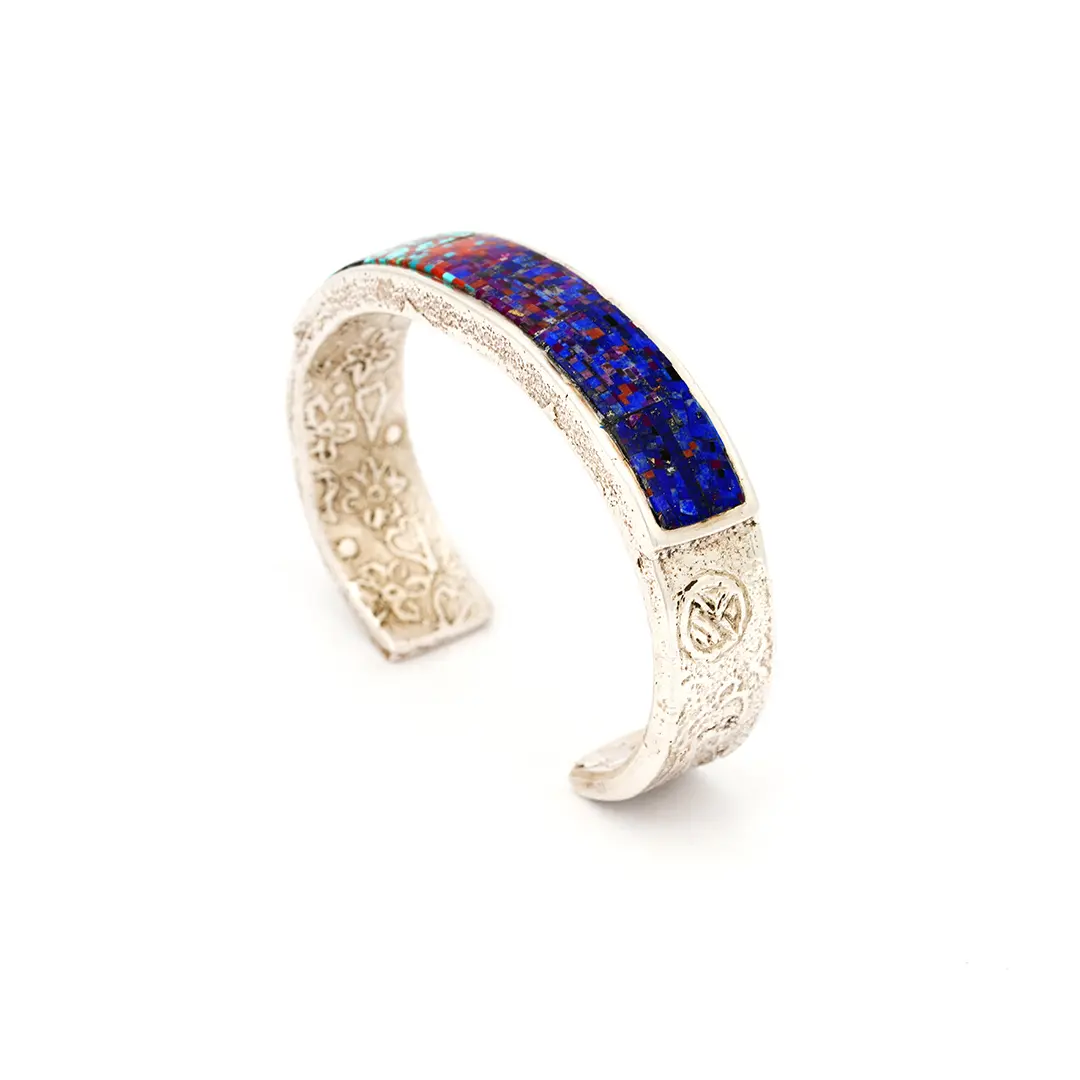Carl and Irene Clark are celebrated Navajo jewelers renowned for their innovative contributions to Native American jewelry, particularly through their groundbreaking micro-fine inlay technique. As a husband-and-wife team, their work beautifully blends traditional Navajo craftsmanship with contemporary design, setting them apart in the world of Native American art.
Carl Clark, a master silversmith, is known for his skillful use of silver, often incorporating stones like turquoise, coral, and onyx that hold deep cultural significance to the Navajo people. His intricate designs often feature Navajo symbols such as the Yei, spiritual figures representing the connection between the physical and spiritual realms. Irene Clark complements his work with her own expertise in design and inlay, contributing to the unique pieces they create together.
What truly sets the Clarks apart, however, is their pioneering work with *micro-fine inlay*. This technique involves the use of extremely small, precisely cut pieces of stone, meticulously set into sterling silver and gold. The inlays are so fine that they appear almost seamless, creating a smooth, continuous flow of color and texture. Their attention to detail and the precision required to craft these tiny inlay has garnered them widespread recognition.
The Clarks’ micro-fine inlay often incorporates geometric patterns, nature-inspired motifs, and traditional Navajo symbols, all of which are rendered with extraordinary skill and care. This technique elevates their jewelry, blending modern aesthetics with the cultural significance of their heritage. Their work pushes the boundaries of traditional Navajo inlaid jewelry, achieving a level of sophistication that has earned them a prominent place in the Native American art community.
Through their mastery of this delicate technique, Carl and Irene Clark have not only preserved and honored their Navajo roots but have also pushed the art form to new heights, creating jewelry that is both technically impressive and artistically exceptional.



